Abstract
1. The estimation of antagonist affinity from functional experiments in which the effect of a fixed agonist concentration is reduced by a range of antagonist concentrations ('functional inhibition curves') has been considered from both a theoretical and experimental viewpoint. 2. Theoretical predictions are compared with results obtained from the stimulation of [35S]-GTP gamma S binding by acetylcholine to membranes of Chinese hamster ovary (CHO) cells stably transfected with human m1-m4 muscarinic receptors, and inhibition of the stimulated binding by pirenzepine and AQ-RA 741. 3. The usual procedure of applying the Cheng-Prusoff correction is shown to be theoretically invalid, and predictions are made of the size and distribution of errors associated with this procedure. 4. A different procedure for estimating antagonist affinity, using the principles of dose-ratio analysis and analogous to use of the Gaddum equation, is found to be accurate and theoretically valid. 5. A novel method of analysis allows accurate estimation of both antagonist affinity and Schild slope, by fitting the combined data from an antagonist inhibition curve and an agonist activation curve directly to a form of the Schild equation (derived by Waud) using non-linear regression analysis. 6. It is shown that the conventional Schild analysis can be enhanced by treating part of the data as a family of inhibition curves and including in the Schild plot dose-ratios estimated from the inhibition curves.
Full text
PDF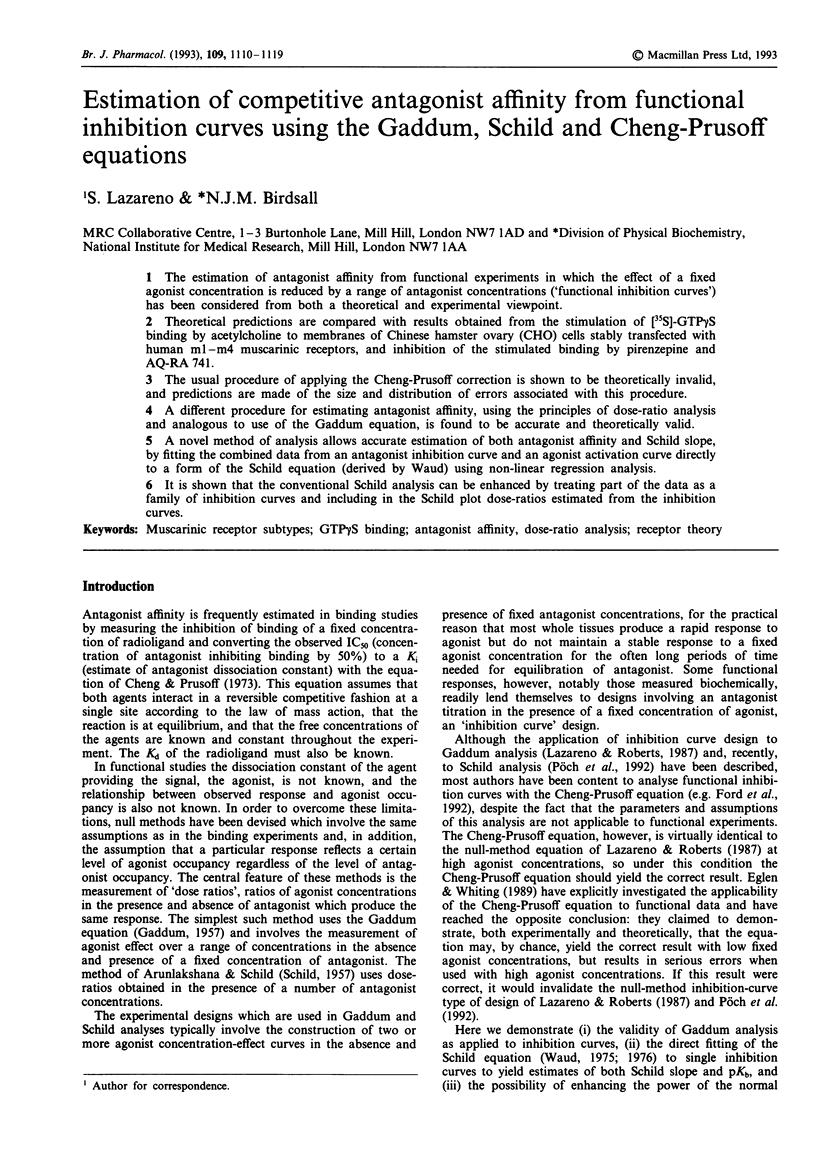
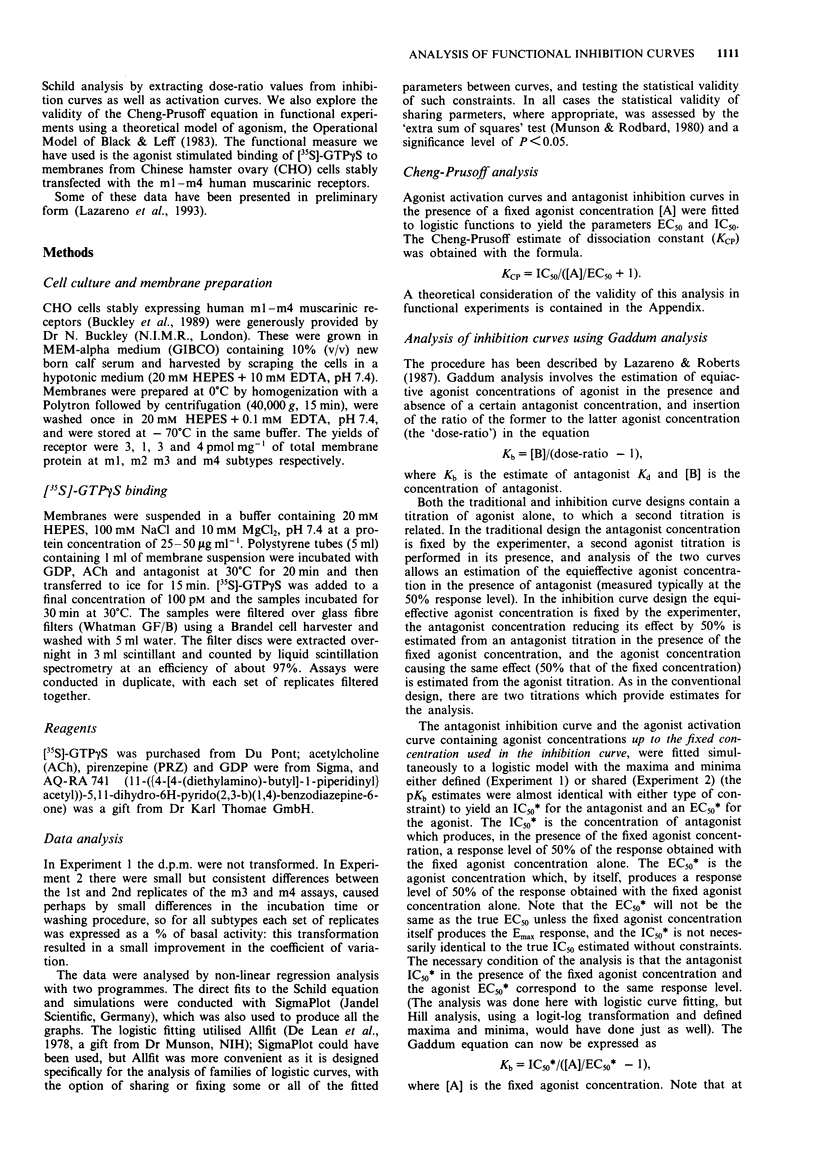
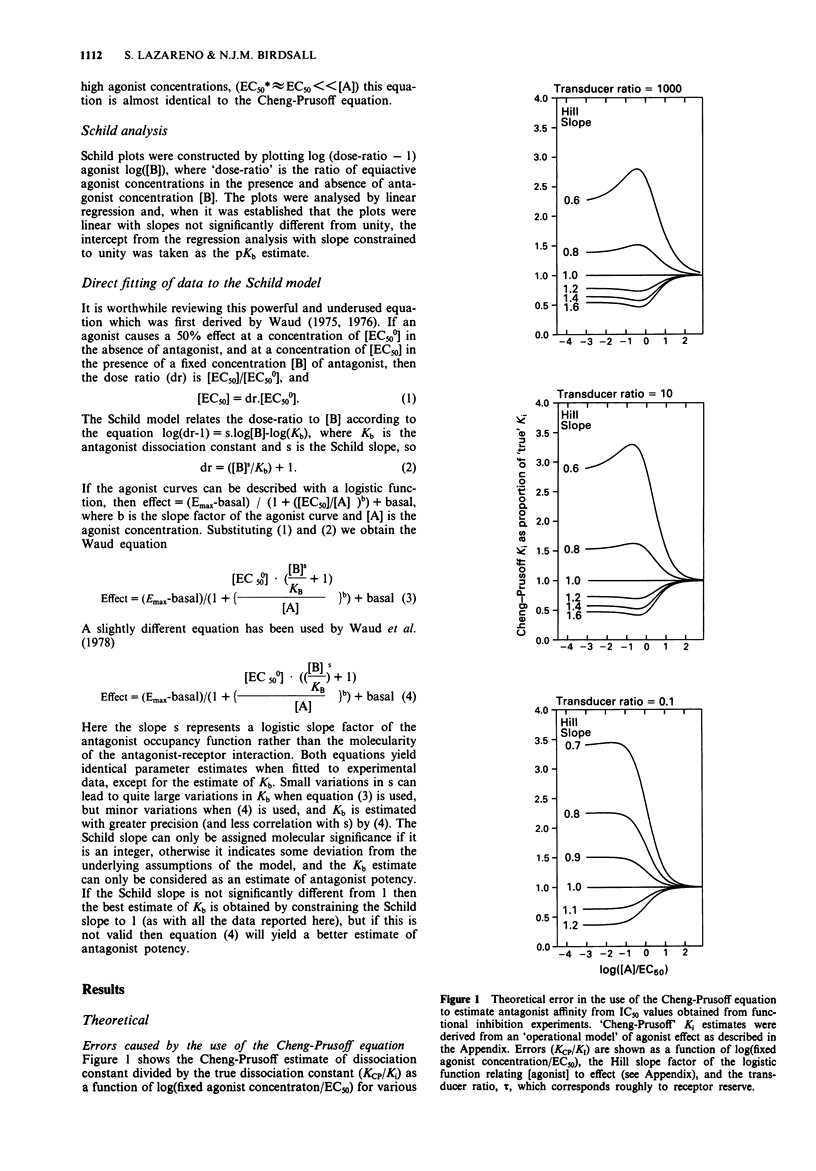
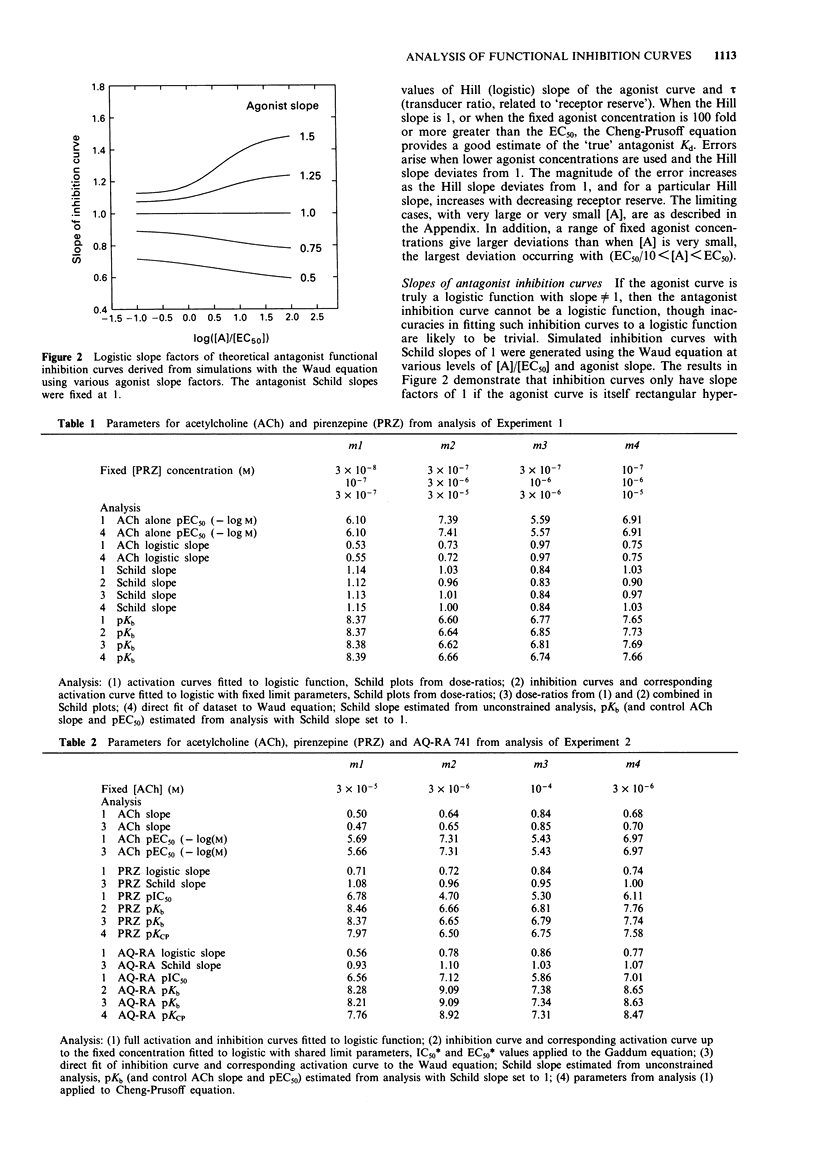
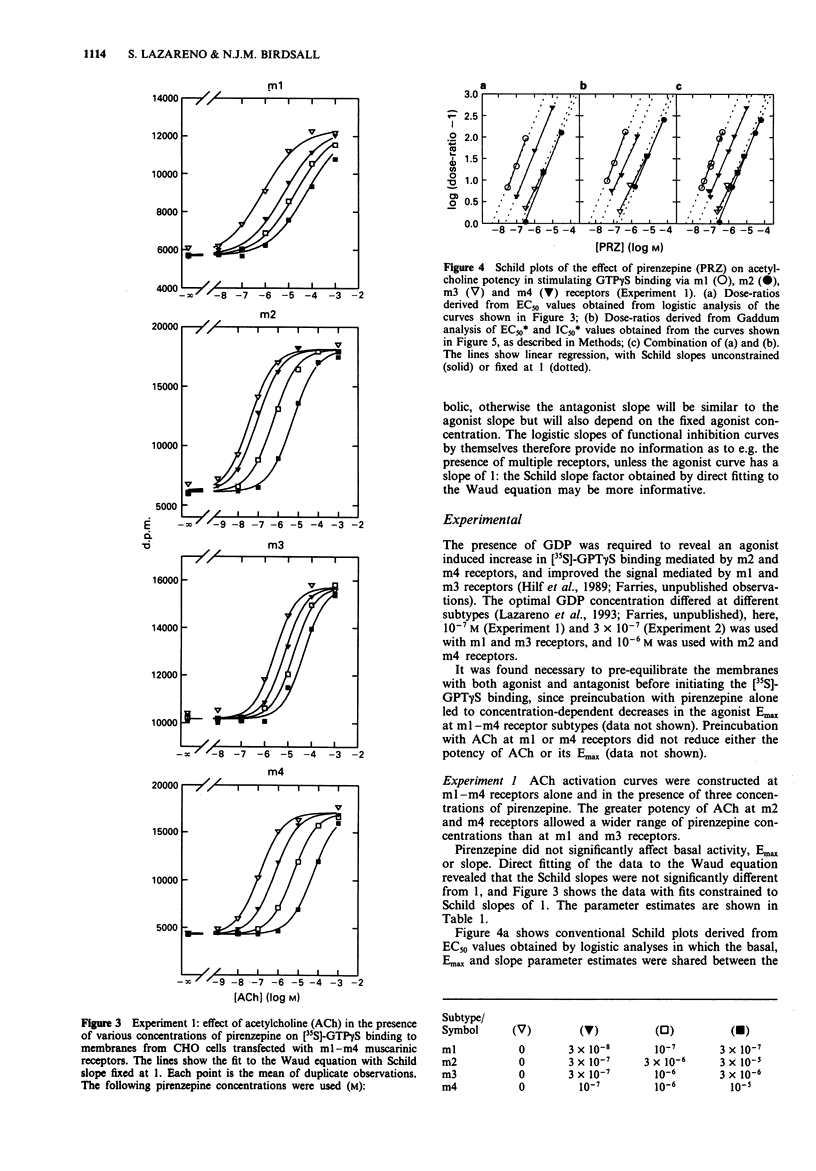
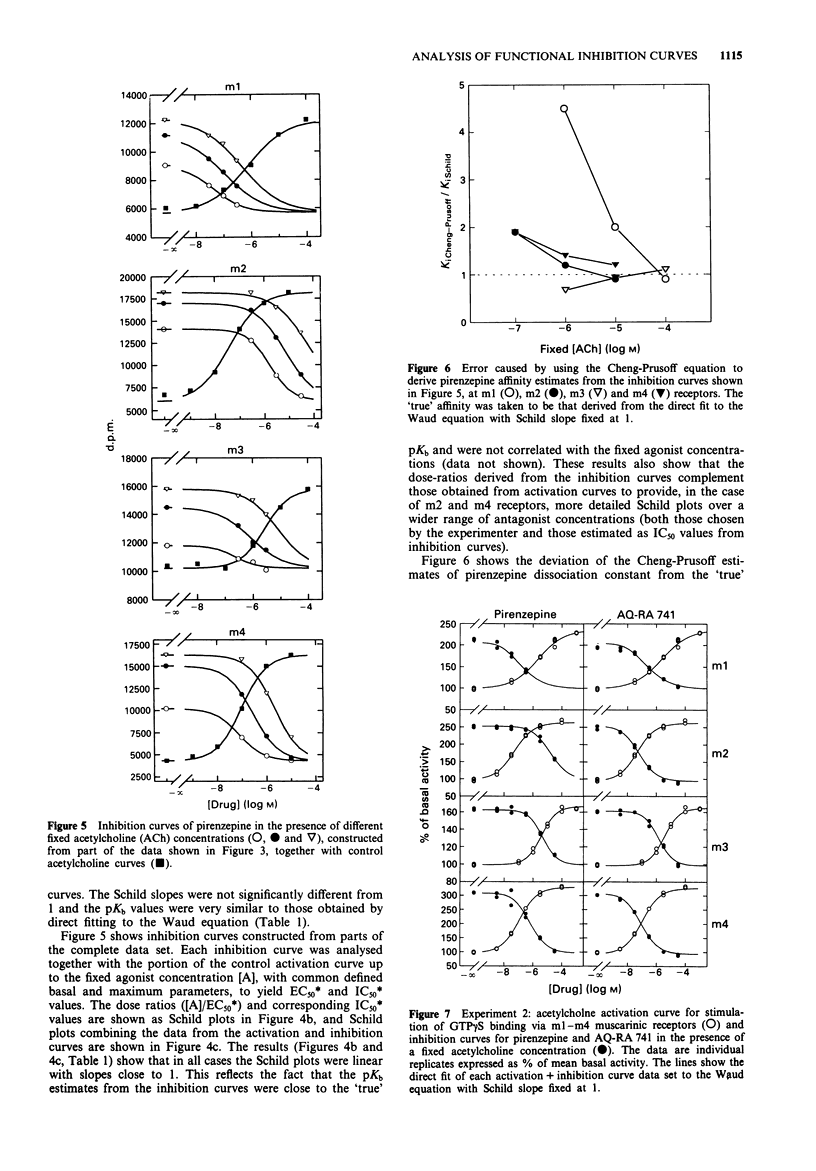
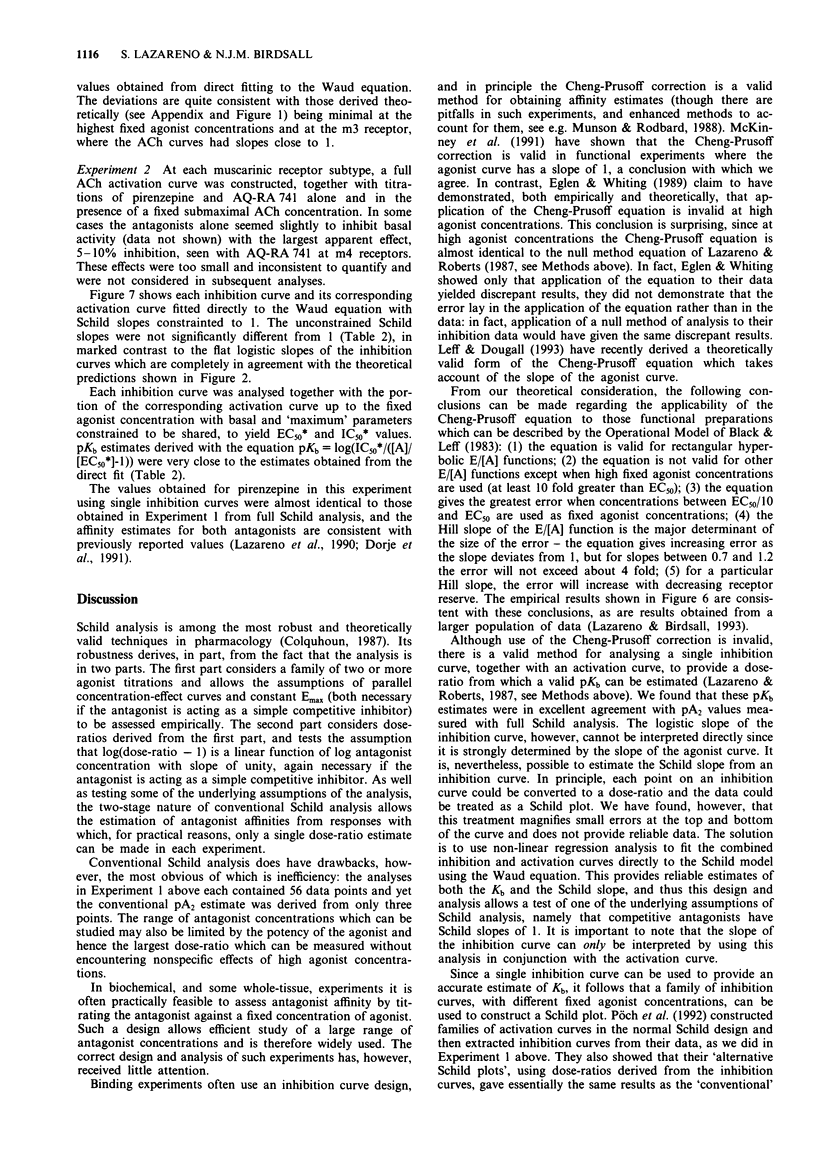
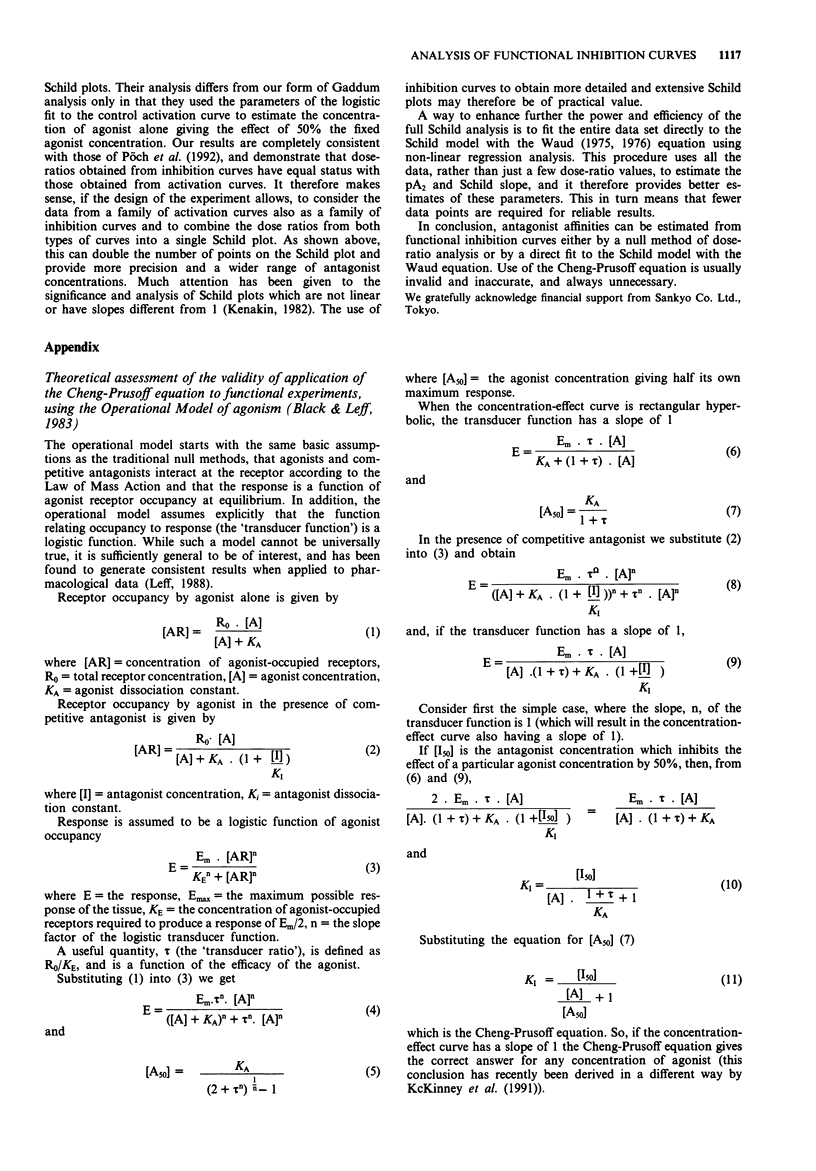
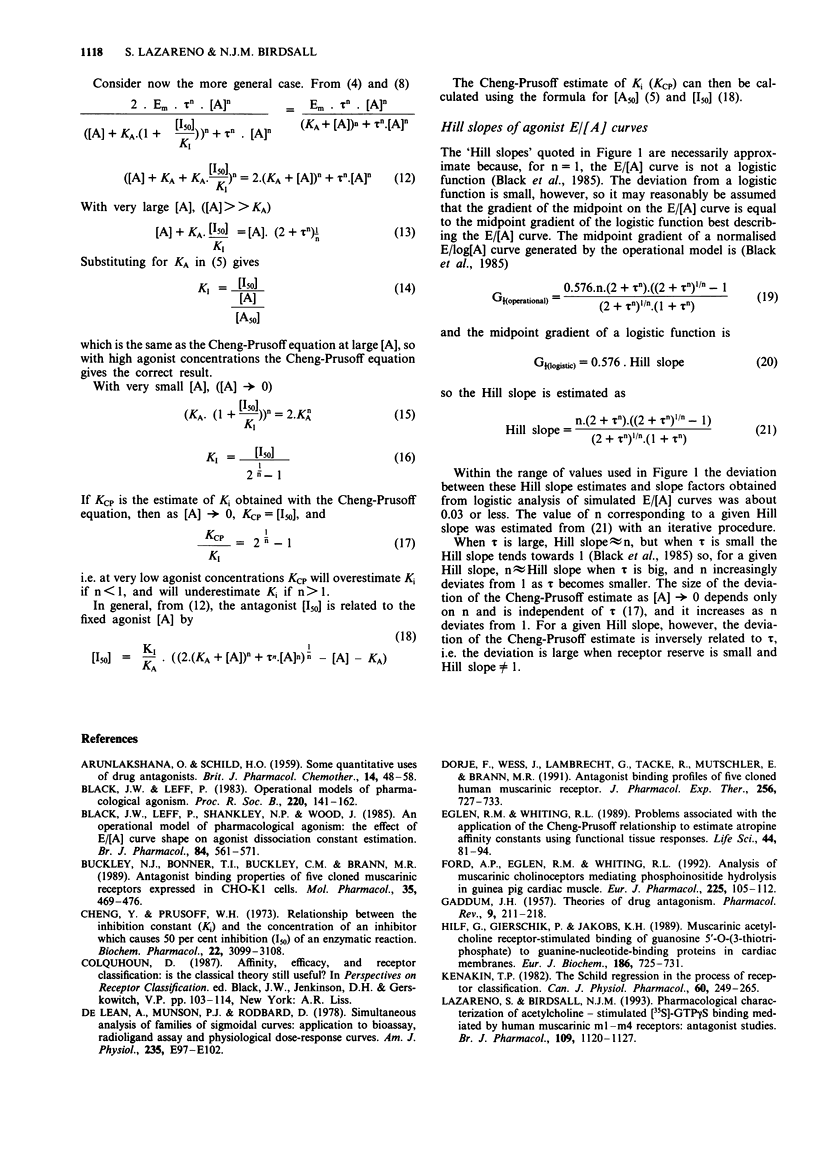
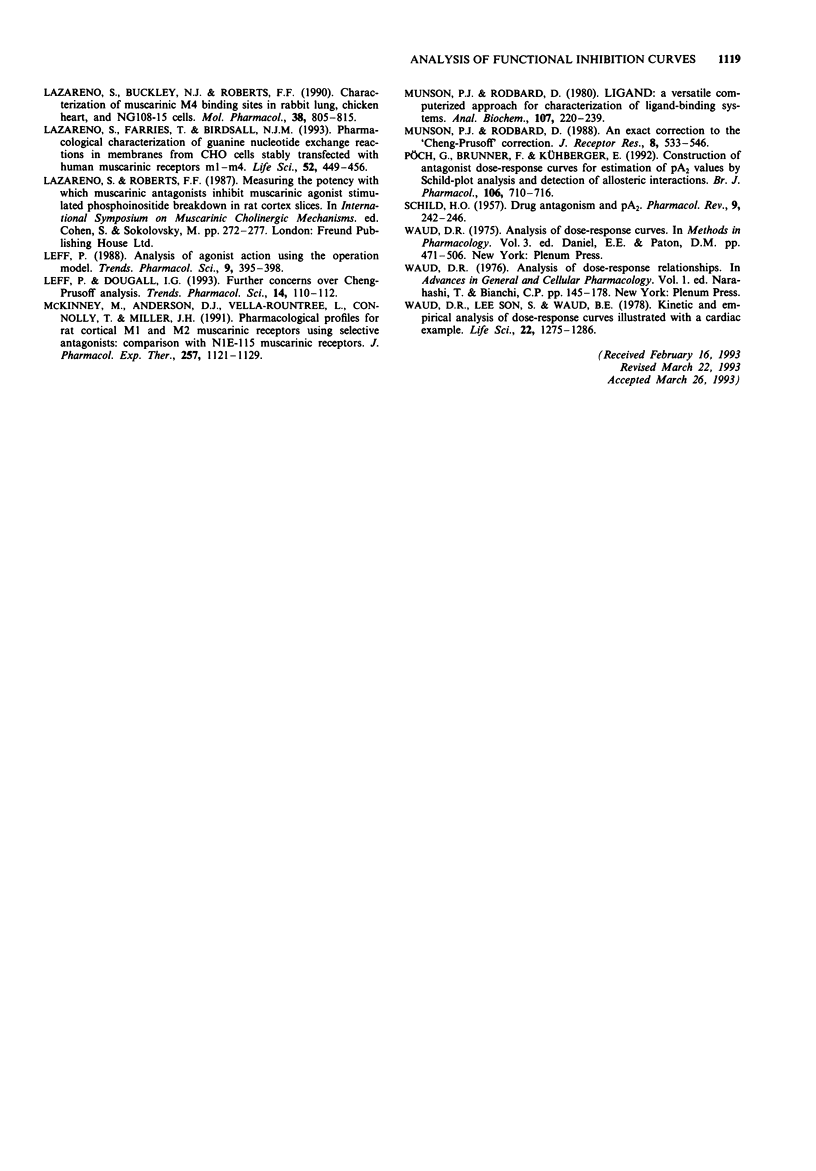
Selected References
These references are in PubMed. This may not be the complete list of references from this article.
- ARUNLAKSHANA O., SCHILD H. O. Some quantitative uses of drug antagonists. Br J Pharmacol Chemother. 1959 Mar;14(1):48–58. doi: 10.1111/j.1476-5381.1959.tb00928.x. [DOI] [PMC free article] [PubMed] [Google Scholar]
- Black J. W., Leff P. Operational models of pharmacological agonism. Proc R Soc Lond B Biol Sci. 1983 Dec 22;220(1219):141–162. doi: 10.1098/rspb.1983.0093. [DOI] [PubMed] [Google Scholar]
- Black J. W., Leff P., Shankley N. P., Wood J. An operational model of pharmacological agonism: the effect of E/[A] curve shape on agonist dissociation constant estimation. Br J Pharmacol. 1985 Feb;84(2):561–571. doi: 10.1111/j.1476-5381.1985.tb12941.x. [DOI] [PMC free article] [PubMed] [Google Scholar]
- Buckley N. J., Bonner T. I., Buckley C. M., Brann M. R. Antagonist binding properties of five cloned muscarinic receptors expressed in CHO-K1 cells. Mol Pharmacol. 1989 Apr;35(4):469–476. [PubMed] [Google Scholar]
- Cheng Y., Prusoff W. H. Relationship between the inhibition constant (K1) and the concentration of inhibitor which causes 50 per cent inhibition (I50) of an enzymatic reaction. Biochem Pharmacol. 1973 Dec 1;22(23):3099–3108. doi: 10.1016/0006-2952(73)90196-2. [DOI] [PubMed] [Google Scholar]
- DeLean A., Munson P. J., Rodbard D. Simultaneous analysis of families of sigmoidal curves: application to bioassay, radioligand assay, and physiological dose-response curves. Am J Physiol. 1978 Aug;235(2):E97–102. doi: 10.1152/ajpendo.1978.235.2.E97. [DOI] [PubMed] [Google Scholar]
- Dörje F., Wess J., Lambrecht G., Tacke R., Mutschler E., Brann M. R. Antagonist binding profiles of five cloned human muscarinic receptor subtypes. J Pharmacol Exp Ther. 1991 Feb;256(2):727–733. [PubMed] [Google Scholar]
- Eglen R. M., Whiting R. L. Problems associated with the application of the Cheng-Prusoff relationship to estimate atropine affinity constants using functional tissue responses. Life Sci. 1989;44(1):81–94. doi: 10.1016/0024-3205(89)90221-x. [DOI] [PubMed] [Google Scholar]
- Ford A. P., Eglen R. M., Whiting R. L. Analysis of muscarinic cholinoceptors mediating phosphoinositide hydrolysis in guinea pig cardiac muscle. Eur J Pharmacol. 1992 Feb 13;225(2):105–112. doi: 10.1016/0922-4106(92)90089-e. [DOI] [PubMed] [Google Scholar]
- GADDUM J. H. Theories of drug antagonism. Pharmacol Rev. 1957 Jun;9(2):211–218. [PubMed] [Google Scholar]
- Hilf G., Gierschik P., Jakobs K. H. Muscarinic acetylcholine receptor-stimulated binding of guanosine 5'-O-(3-thiotriphosphate) to guanine-nucleotide-binding proteins in cardiac membranes. Eur J Biochem. 1989 Dec 22;186(3):725–731. doi: 10.1111/j.1432-1033.1989.tb15266.x. [DOI] [PubMed] [Google Scholar]
- Kenakin T. P. The Schild regression in the process of receptor classification. Can J Physiol Pharmacol. 1982 Mar;60(3):249–265. doi: 10.1139/y82-036. [DOI] [PubMed] [Google Scholar]
- Lazareno S., Birdsall N. J. Pharmacological characterization of acetylcholine-stimulated [35S]-GTP gamma S binding mediated by human muscarinic m1-m4 receptors: antagonist studies. Br J Pharmacol. 1993 Aug;109(4):1120–1127. doi: 10.1111/j.1476-5381.1993.tb13738.x. [DOI] [PMC free article] [PubMed] [Google Scholar]
- Lazareno S., Buckley N. J., Roberts F. F. Characterization of muscarinic M4 binding sites in rabbit lung, chicken heart, and NG108-15 cells. Mol Pharmacol. 1990 Dec;38(6):805–815. [PubMed] [Google Scholar]
- Lazareno S., Farries T., Birdsall N. J. Pharmacological characterization of guanine nucleotide exchange reactions in membranes from CHO cells stably transfected with human muscarinic receptors m1-m4. Life Sci. 1993;52(5-6):449–456. doi: 10.1016/0024-3205(93)90301-i. [DOI] [PubMed] [Google Scholar]
- Leff P. Analysis of agonist action using the operational model. Trends Pharmacol Sci. 1988 Nov;9(11):395–398. doi: 10.1016/0165-6147(88)90065-x. [DOI] [PubMed] [Google Scholar]
- Leff P., Dougall I. G. Further concerns over Cheng-Prusoff analysis. Trends Pharmacol Sci. 1993 Apr;14(4):110–112. doi: 10.1016/0165-6147(93)90080-4. [DOI] [PubMed] [Google Scholar]
- McKinney M., Anderson D. J., Vella-Rountree L., Connolly T., Miller J. H. Pharmacological profiles for rat cortical M1 and M2 muscarinic receptors using selective antagonists: comparison with N1E-115 muscarinic receptors. J Pharmacol Exp Ther. 1991 Jun;257(3):1121–1129. [PubMed] [Google Scholar]
- Munson P. J., Rodbard D. An exact correction to the "Cheng-Prusoff" correction. J Recept Res. 1988;8(1-4):533–546. doi: 10.3109/10799898809049010. [DOI] [PubMed] [Google Scholar]
- Munson P. J., Rodbard D. Ligand: a versatile computerized approach for characterization of ligand-binding systems. Anal Biochem. 1980 Sep 1;107(1):220–239. doi: 10.1016/0003-2697(80)90515-1. [DOI] [PubMed] [Google Scholar]
- Pöch G., Brunner F., Kühberger E. Construction of antagonist dose-response curves for estimation of pA2-values by Schild-plot analysis and detection of allosteric interactions. Br J Pharmacol. 1992 Jul;106(3):710–716. doi: 10.1111/j.1476-5381.1992.tb14399.x. [DOI] [PMC free article] [PubMed] [Google Scholar]
- SCHILD H. O. Drug antagonism and pAx. Pharmacol Rev. 1957 Jun;9(2):242–246. [PubMed] [Google Scholar]
- Waud D. R., Son S. L., Waud B. E. Kinetic and empirical analysis of dose-response curves illustrated with a cardiac example. Life Sci. 1978 Apr 3;22(13-15):1275–1285. doi: 10.1016/0024-3205(78)90096-6. [DOI] [PubMed] [Google Scholar]


